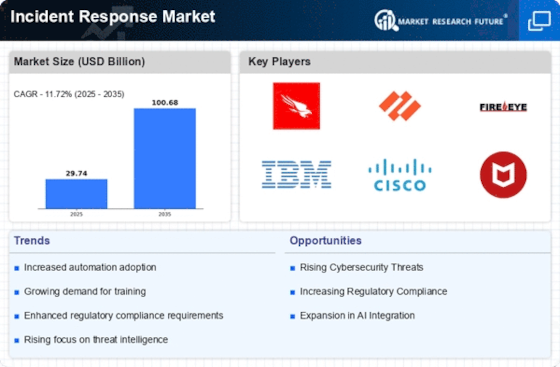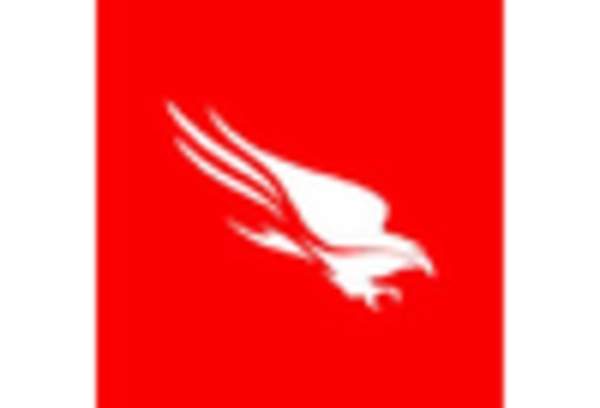Rising Cybersecurity Threats
The Incident Response Market is experiencing a surge in demand due to the increasing frequency and sophistication of cyber threats. Organizations are facing a myriad of attacks, including ransomware, phishing, and advanced persistent threats. According to recent data, the number of reported cyber incidents has escalated, prompting businesses to invest in incident response solutions. This trend indicates a growing recognition of the need for robust incident response strategies to mitigate potential damages. As a result, the market for incident response services is projected to grow significantly, with estimates suggesting a compound annual growth rate of over 10% in the coming years. This heightened awareness of cybersecurity risks is driving organizations to prioritize incident response capabilities, thereby fueling the growth of the Incident Response Market.
Adoption of Cloud Technologies
The Incident Response Market is being significantly impacted by the widespread adoption of cloud technologies. As organizations migrate their operations to the cloud, they face new security challenges that necessitate effective incident response strategies. The cloud environment introduces complexities that traditional incident response methods may not adequately address. Consequently, businesses are increasingly seeking specialized incident response services tailored for cloud infrastructures. Market data indicates that the cloud security market is expected to grow substantially, with incident response services being a critical component of this growth. This trend suggests that as more organizations embrace cloud solutions, the demand for incident response capabilities will likely rise, further propelling the Incident Response Market forward. The integration of cloud technologies into incident response frameworks is becoming essential for organizations aiming to safeguard their digital assets.
Regulatory Compliance Requirements
The Incident Response Market is increasingly influenced by stringent regulatory compliance requirements. Organizations are mandated to adhere to various data protection laws and regulations, such as the General Data Protection Regulation and the Health Insurance Portability and Accountability Act. Non-compliance can result in severe penalties, which has led businesses to invest in incident response solutions to ensure they meet these legal obligations. The market is witnessing a shift as companies recognize that effective incident response is not only a best practice but also a necessity for compliance. This trend is expected to drive growth in the incident response services sector, as organizations seek to align their practices with regulatory standards. The emphasis on compliance is likely to continue shaping the Incident Response Market, as businesses strive to protect sensitive data and avoid costly fines.
Increased Investment in Cybersecurity
The Incident Response Market is witnessing a notable increase in investment in cybersecurity initiatives. Organizations are allocating more resources to enhance their cybersecurity posture, recognizing the potential financial and reputational damage associated with cyber incidents. Recent statistics reveal that global spending on cybersecurity is projected to exceed hundreds of billions of dollars annually. This influx of investment is driving the demand for incident response services, as businesses seek to establish comprehensive strategies to address potential threats. The trend indicates a shift towards proactive measures, with organizations prioritizing incident response planning and execution. As the landscape of cyber threats evolves, the Incident Response Market is likely to benefit from this heightened focus on cybersecurity investment, leading to sustained growth in the sector.
Emergence of Managed Security Service Providers
The Incident Response Market is being transformed by the emergence of Managed Security Service Providers (MSSPs). These providers offer specialized incident response services, allowing organizations to leverage external expertise in managing and mitigating cyber threats. The increasing complexity of cyber incidents has led many businesses to seek the support of MSSPs, which can provide 24/7 monitoring and rapid response capabilities. Market trends suggest that the demand for MSSPs is on the rise, as organizations recognize the value of outsourcing their incident response functions. This shift is likely to enhance the overall effectiveness of incident response efforts, as MSSPs bring advanced tools and methodologies to the table. The growing reliance on managed services is expected to play a pivotal role in shaping the Incident Response Market, as more organizations turn to these providers for comprehensive security solutions.


















Leave a Comment